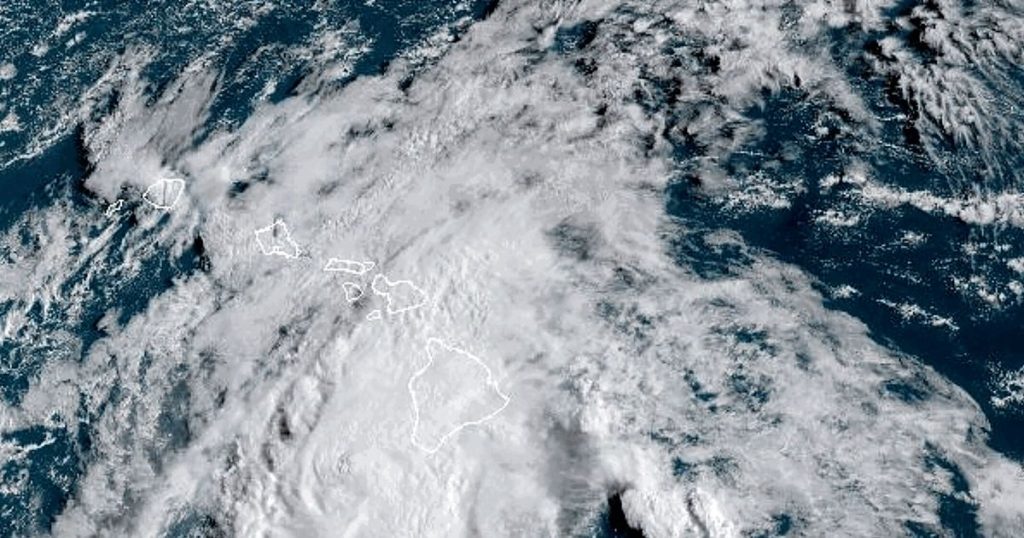Hurricane Hone passed just south of Hawaii on Sunday, bringing heavy rain that caused flooding and closed highways on the Big Island. The National Weather Service canceled red flag warnings for wildfires due to strong winds on the drier sides of the islands. Tropical Storm Hector also formed in the eastern Pacific, but there were no coastal watches or warnings in effect as it churned far out at sea. Hurricane Gilma, a Category 3 storm, was expected to weaken before reaching Hawaii.
Hone had top winds of 85 mph as it passed by the Big Island, bringing tropical storm force winds and up to a foot of rain to some areas. Flooding closed major highways and isolated properties, but no injuries or damage were reported. Shelters were opened, and beach parks on the eastern side of the Big Island were closed due to high surf. The storm helped alleviate drought conditions in some areas, but concerns about wildfire risks remained, particularly in areas with dry brush and overgrown vegetation.
Last year’s deadly wildfires on Maui, fueled by hurricane-force winds, were still fresh in the minds of residents as Hurricane Hone approached. Red flag alerts were issued due to warm temperatures, low humidity, and stronger winds that raised fire dangers. The archipelago was already abnormally dry or in drought, according to the U.S. Drought Monitor. Residents like Calvin Endo, who live in wildfire-prone areas, took precautions by clearing dry brush on private property to reduce fire risks.
The cause of the deadly wildfire in Lahaina in 2023 was still under investigation, but it was suspected to be ignited by bare electrical wire and leaning power poles toppled by strong winds. Power companies in Hawaii were prepared to shut off power if necessary to prevent fires, but ultimately, the safety measures were not needed as Hurricane Hone passed by. A small blaze in Waikoloa was brought under control without injuries or damage, highlighting the importance of wildfire prevention measures in dry areas.
The rainfall from Hurricane Hone was described as wringing out like a wet towel as it moved up the mountain terrain, causing flooding in windward sections of the Big Island. Roads were cut off by high floodwaters, impacting travel in those areas. Most of the state did not experience significant flooding concerns from the storm. The storm’s name, Hawaiian for “sweet and soft,” contrasted with the challenges it brought to residents, highlighting the unpredictable and sometimes destructive nature of tropical weather systems. Updates were provided regularly by the National Hurricane Center and local officials to keep residents informed and safe during the storm.


